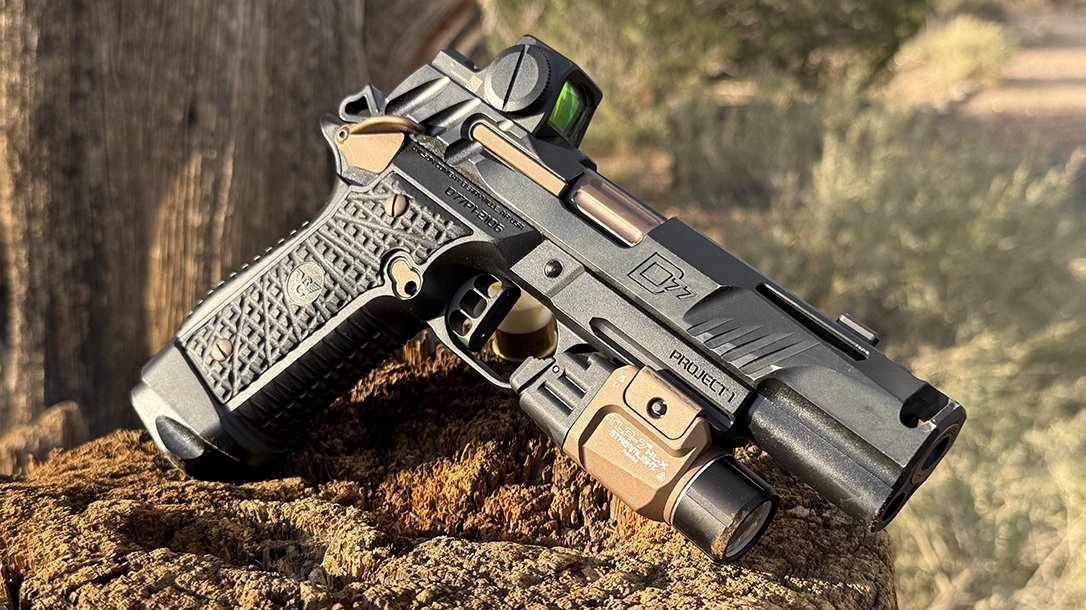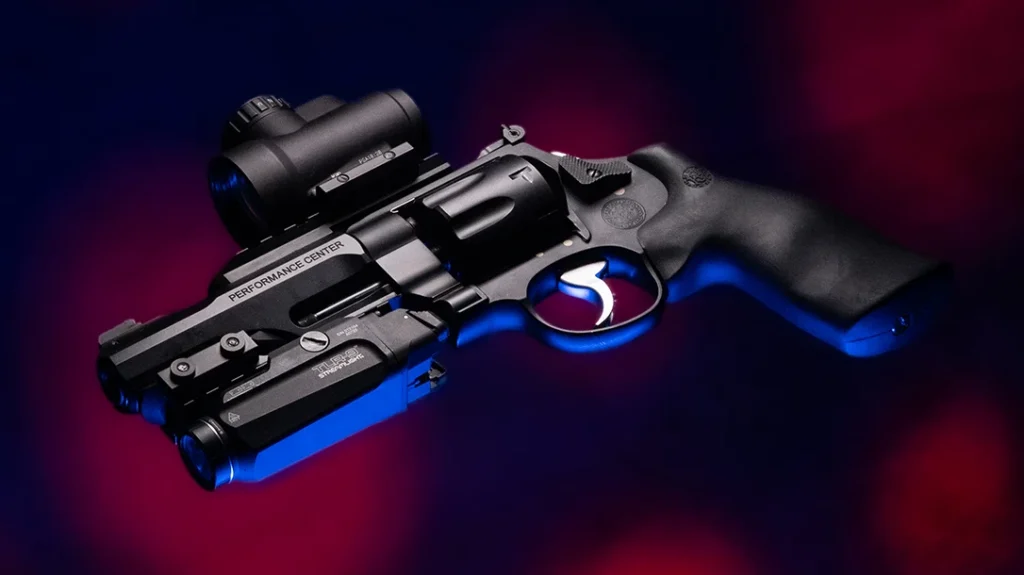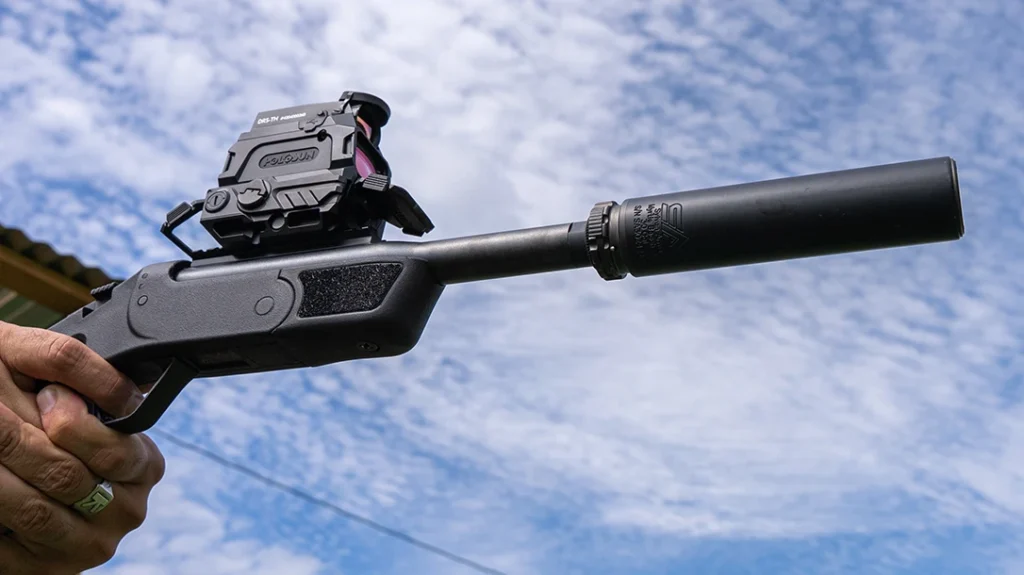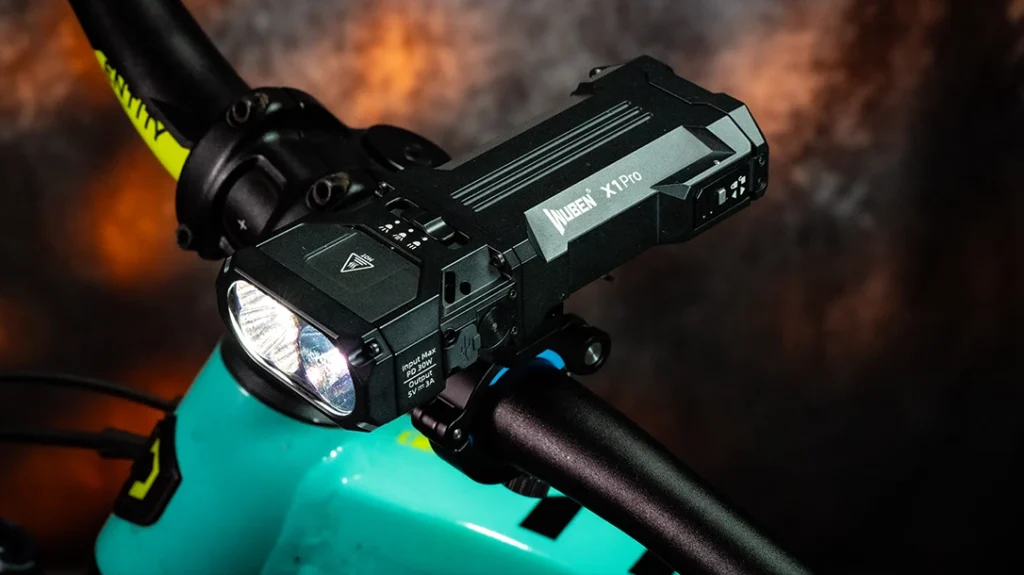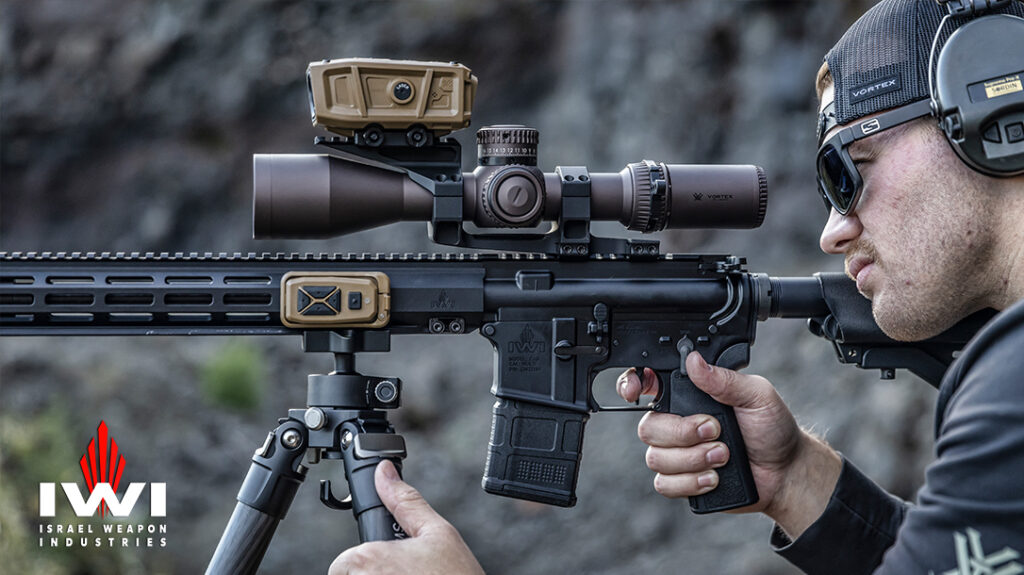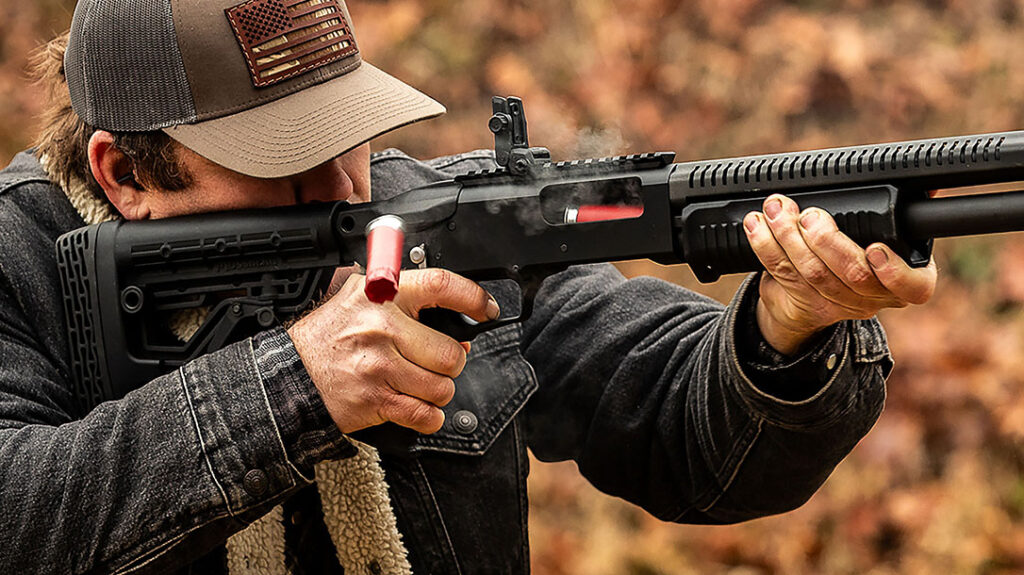Wilson Combat’s D77 Project 1 pistol has been around a bit and has seen some testing. However, most have been your typical low-round-count variety. It is very hard to get for testing and about as hard to hang on to. Wilson Combat was gracious enough to let me take my testing a bit farther, which amounts to a 3000-round test in roughly a month. Half of that was in one class over a single week. Even then, it took three months for a test pistol to become available.
The Wilson Combat D77 Project 1
As a Gunsite Academy instructor, I can audit one class a year. Mine this year was the 350 Optics course. The intermediate course is fast-paced, with roughly 1200 rounds over mostly the first three days. Coupled with testing before the class, it provided a solid test under some harsh conditions.
Division 77 is billed as a sort of “skunk works” for Wilson Combat. Their first project is right in line with the increase in high-capacity 9mm pistols built like race guns but capable of duty or defense use.
Advertisement — Continue Reading Below
Starting with their proven EDC X9 and SFX9 base guns, it features more aggressive checkering and grip treatment, a larger magazine funnel, and improved frame rails. Magazines are 18-round with a larger base pad that includes a “hook” for easier removal. Trigger is flat, crisp, and very predictable. Internals are all machined from their Bullet ProofÒ line.

Everything on the slide is a whole other ball game, starting with a new optic cut using a pin system. This allows the direct mount of most Red Dot Sights (RDS), keeping things much closer to the sight line.
Advertisement — Continue Reading Below
The rear sight plate is new and integral to the firing pin stop. It’s very clean, solid, and will not move, eliminating any need to re-zero when installed.
The slide is ported to match the integrally ported barrel. Wilson boasts a 42% recoil reduction, and after this test, it’s 100% believable. Barrel is 5-inch total, allowing it to fit in most 1911 rail holsters. External extractor, unique front and rear cocking serrations, and a heavy machine chamfer on the bottom make for smooth operation.
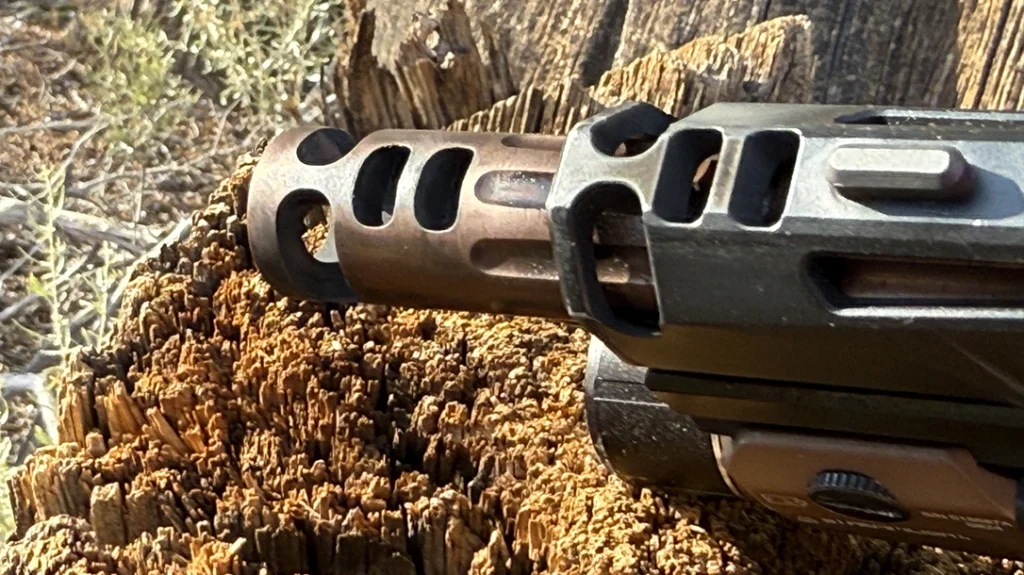
Advertisement — Continue Reading Below
Their new RPG guide rod keeps the fully supported bull barrel moving smoothly. Front sight is a battlesight with red fiber optic, but a sight “plug” is included for RDS use.
Testing
With no integral rear sight, I mounted my Sig Sauer Romeo X Pro RDS. These mount low to the slide and include a rear sight. Using the “plug,” it provided true co-witness sighting, which held POA at 7 yards—about perfect. With a taller RDS, you could use the fiber, but this low setup is my preference.
The pistol comes with two 18-round magazines, but my EDC X9 18-rounders worked perfectly. For the Gunsite class, two primary holsters were used: a leather OWB from Palmetto Leather (available on Wilson Combat’s site), and a QVO tactical using G-Codes RTI for use with the Streamlight TLR7 -HL-X.
Advertisement — Continue Reading Below
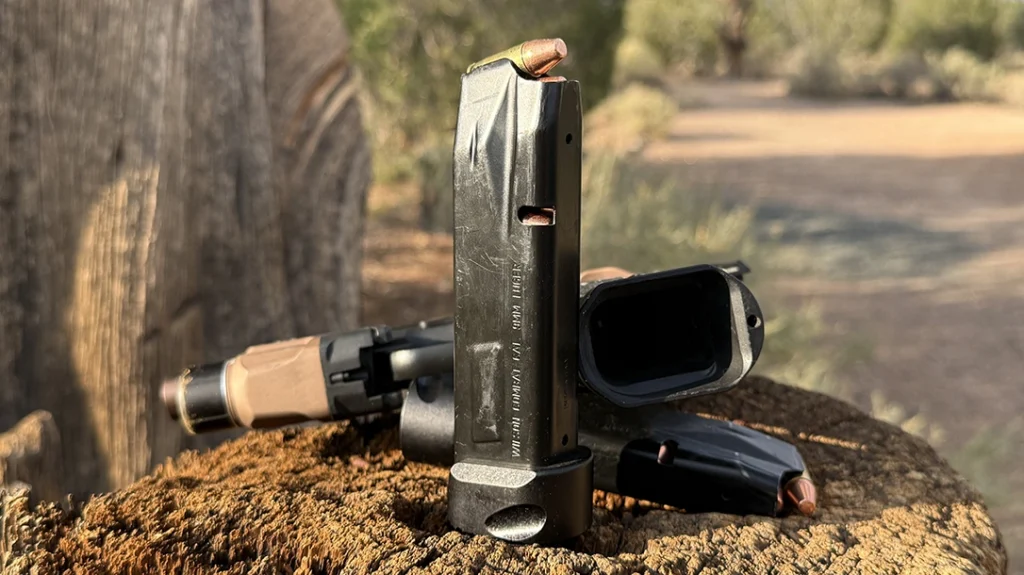
Gunsite’s 350 includes nighttime indoor and outdoor simulators, so the light came in very handy. Ammunition was mostly Wilson’s 135-grain Berry’s load, making 950 FPS.
On the Range with the Project 1
Initial testing focused on zeroing and functional testing, as well as holster compatibility. Compensated pistols can be kind of finicky, but this was not.
Advertisement — Continue Reading Below
Prior to heading off to the class, it saw a healthy diet of 115-147 grain practice and defense ammunition. Since the class required frangible, it saw three different types. Somewhat to my surprise, it ran everything without a single stoppage, even the practice loads.
Recoil reduction was amazing, especially with the hot loads. However, even the light loads saw a significant reduction in muzzle rise and recoil. Accuracy was as expected with my best group using Doubletap Ammunition Colt National Match 124 grain.
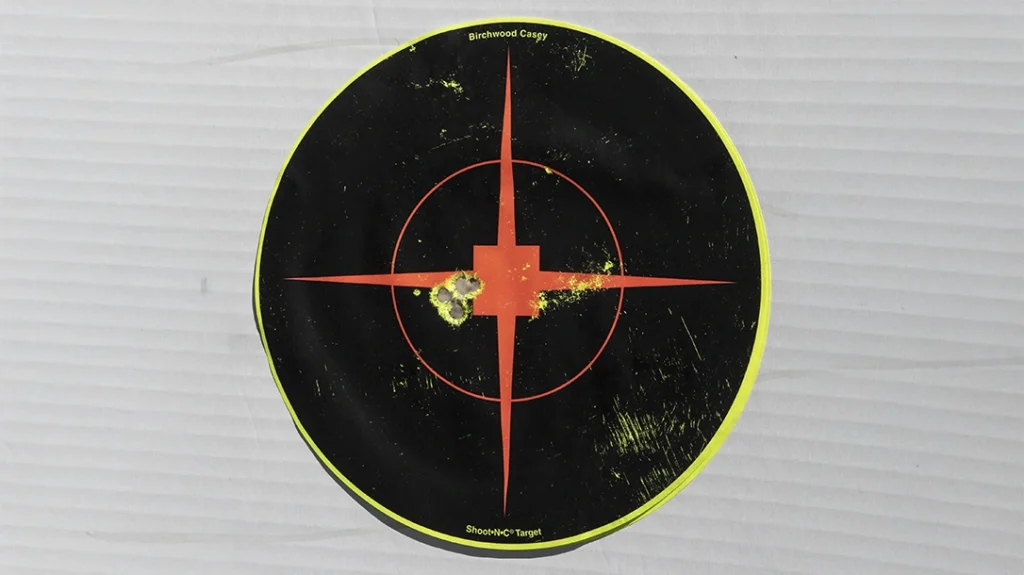
Advertisement — Continue Reading Below
Fast, slow, or really fast. Regardless of the ammunition, this pistol is as accurate as the platform can likely be. The rest is up to the shooter.
Gunsite 350 Optics Intermediate Pistol
The 350 Optics class is an intermediate pistol class focusing on the use of the RDS (Red Dot Sight). Round count is advertised at 1200 rounds. However, given some extra presses on my part, it was a tad over 1300 rounds. Most of that occurs in three of the five days. There are several indoor and outdoor simulators, as well as a force-on-force component. The highest round count day for me was around 400, but mostly 250-300 rounds.

Advertisement — Continue Reading Below
Conditions were kind of brutal, even for Gunsite. Using an infrared thermometer, the range deck temperature ranged from 101 to 107 degrees each day. Windy at times, dusty most of the time; humidity ranged from 5% to 35%. That is downright muggy for Paulden, AZ.
Magazines were dropped in the dirt, along with the shooters given prone and other positions. The pistol started clean day one and was lightly oiled on two of the five days. It was not cleaned for the rest of the class.
Shooting the D77 Project 1
Reliability was flawless, even with the 950 FPS Berry’s load. The slide was “slower” than testing with +P loads, but not slow. Running a “Bill Drill” test, it spat out ammo as fast as the trigger could be pulled.
Advertisement — Continue Reading Below
During the entirety of the class, there were no stoppages outside those “set up” for drills. This included several simulator runs with frangible from both Federal and Norma. It was hot, dirty, and at times humid, and there was nothing ever resembling a stoppage. Even some of the combat plastic in the class could not duplicate that performance.
With several of the latest and greatest 2011 pistols present, at least a couple started to choke a bit by the end. Two had to be taken off the line for repairs. It just does not get any more reliable.

Soft shooting is a bit of an understatement; there is no doubt the compensator works! There was largely no need for sight tracking because the thing just does not move. Several students and instructors commented on how the slide was as flat as anything they had ever seen. Given that our instructors were among the most experienced you will see, that is impressive.
It was so flat it took some getting used to—anticipating at least some recoil that just was not there. With a solid grip, it just did not move. Compared to my EDC X9 with the external compensator, the difference was noticeable.
It was louder, for sure —no louder than the 2011s with comps, but louder than my EDX9 with the external. Shooting from retention (CQB), you noticed for sure, but there was no annoying debris in my face.
The D77 Project 1 In Hand
The ergonomics are amazing. In fact, outside my EDC X9, the Project 1 is the most comfortable pistol ever used. Checkering on the grip panels was a tad aggressive for me. However, a touch of 80-grit took care of that. Given the round count, my hands were a little sore, but all my skin remained. Again, not true for several in the class.

The Division 77 Project 1 points like a 1911 with no annoying grip safety to deal with. The only other change was to the “carry” slide stop to suit my hands. With this (and my EDC X9), my grip tends to ride on the slide stop, preventing it from locking open on the last round. Moving to their carry model fixes that entirely.
Other Considerations
Day one and the indoor simulator at night were spent with a “speed” style rig. The rest was using the leather from concealment. If you demonstrate consistent proficiency on day one, you can move to AIWB, IWB, or OWB with a close-fitting holster.
The Palmetto Leather holster was excellent, comfortable, secure, and lightweight. It could easily be carried as needed. From the Kydex, it was fast and smooth, and it allowed the use of the Streamlight TLR7 HL X. The light never came loose and provided ample power for both indoor and outdoor simulators.
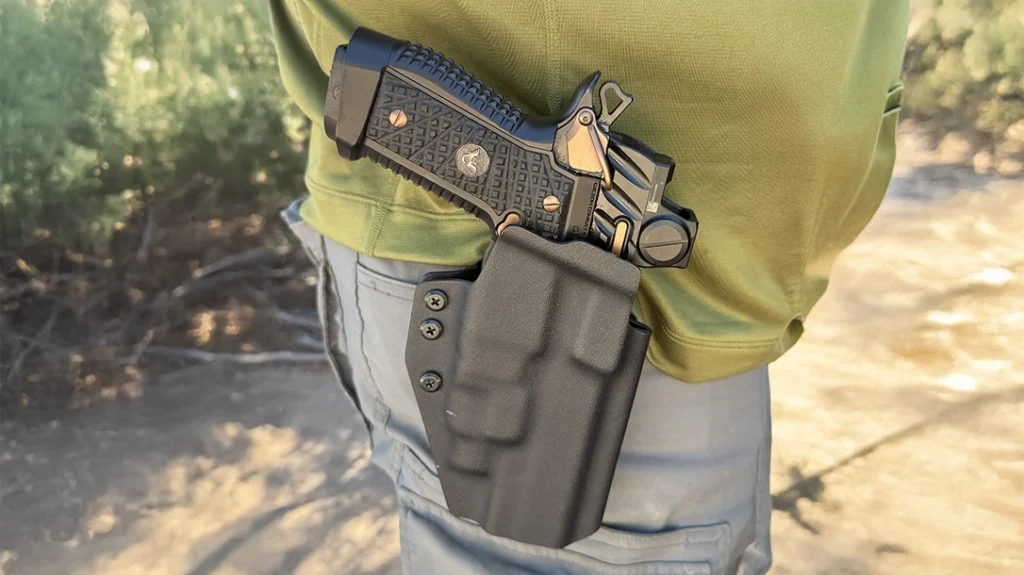
While most will not carry a full-sized pistol for EDC, if you do, this will work. As a school or competition pistol, I am not sure it gets any better. Smooth to present, fast, with no recoil and a flat slide, it is going to take you pretty much as far and as fast as you can shoot.
Sig Sauer’s Romeo X Pro was also flawless, with no glitches using both the open circle and circle dot reticles on the brightest setting.
The Wilson Combat Division 77 Project 1 Parting Shots
Priced at around $4K, it is right up there with the plethora of high-dollar 9mm 1911-style pistols out there. It’s not for everyone, for sure. However, if you are going to spend that kind of change, this really needs to be on your list.
You get all of the advantages of the 1911 system without many of the drawbacks. Most of all, it works, and works, and works some more. My test pistol came from at least one prior writer. So, the round count likely far exceeds 5K in a relatively short period of time. It is still running like a champ.
If you can afford and want the best, for me, this is it, and it just may be for you as well.
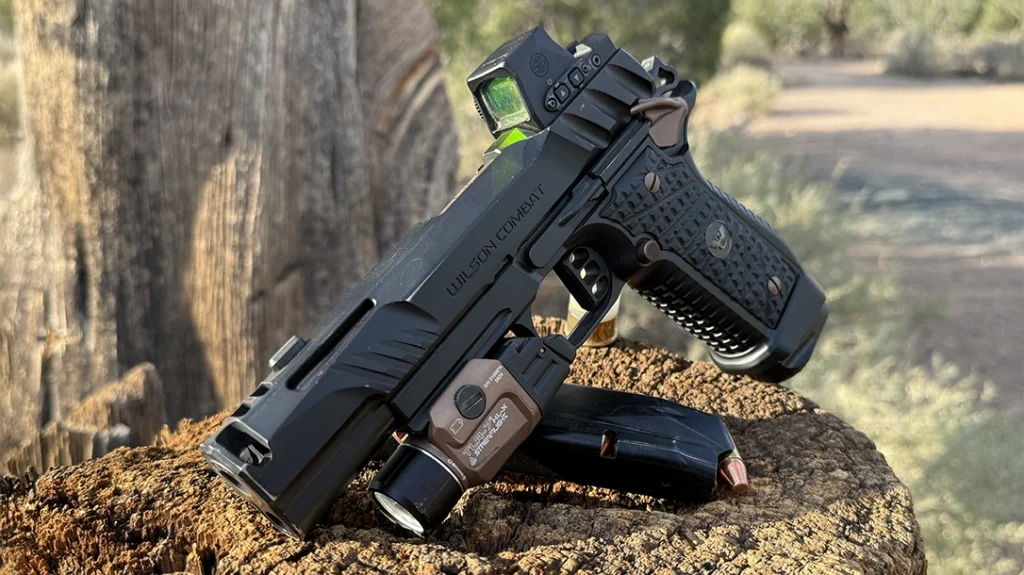
WHY OUR ARTICLES/REVIEWS DO NOT HAVE AFFILIATE LINKS
Affiliate links create a financial incentive for writers to promote certain products, which can lead to biased recommendations. This blurs the line between genuine advice and marketing, reducing trust in the content.
